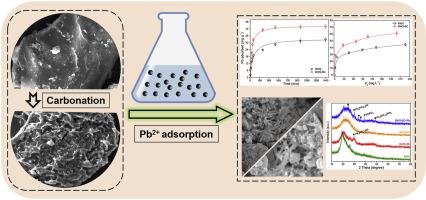Environmental Pollution ( IF 8.9 ) Pub Date : 2020-07-08 , DOI: 10.1016/j.envpol.2020.115177 Yubo Yan 1 , Binoy Sarkar 2 , Lei Zhou 3 , Ling Zhang 4 , Qiao Li 5 , Jianjun Yang 6 , Nanthi Bolan 7

|
In China, more than 10,000 tons of bean-worm, which is rich in protein (68.5%) and essential amino acids (52.8%), is consumed annually. Thus, a large amount of bean-worm skin waste is generated, and is often indiscriminately disposed of, potentially causing environment problems. In this study, bean-worm skin (BWS) waste was pyrolyzed at 500 °C to produce biochar (BWS-BC), and the surface properties of BWS and BWS-BC were characterized using various spectroscopic techniques. Pb(II) adsorption properties of BWS and the corresponding biochar as a function of solution pH, contact time, and equilibrium concentration of Pb(II) were examined using adsorption isotherm, kinetics and thermodynamics studies. The maximum Pb(II) adsorption capacities based on the Langmuir isotherm model were calculated as 45 and 62 mg g−1 for BWS and BWS-BC, respectively, which were comparable to the values obtained for biochars derived from other agro-wastes. The adsorption feasibility, favorability and spontaneity of Pb(II), as derived from the thermodynamic parameters, indicated that chemisorption and precipitation (e.g., hydroxypyromorphite) were the main adsorption mechanism in case of BWS and BWS-BC, respectively. Thus, conversion of BWS to biochar for Pb(II) adsorption can be considered as a feasible, promising and high value-added approach for BWS recycling.



























 京公网安备 11010802027423号
京公网安备 11010802027423号